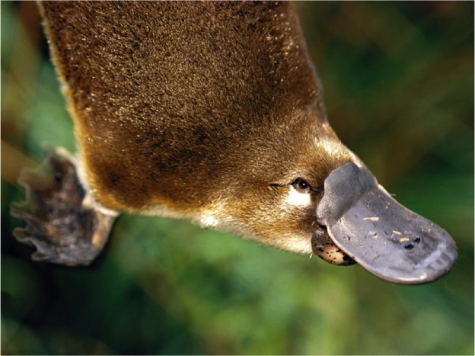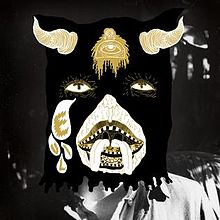Platypuses
According to http://animals.nationalgeographic.com/:
“The platypus is an Australian mammal. The platypus is among nature’s most unlikely animals. In fact, the first scientists to examine a specimen believed they were the victims of a hoax.”
“Platypuses hunt underwater. They use folds of skin cover their eyes and ears to prevent water from entering, and the nostrils close with a watertight seal. In this posture, a platypus can remain submerged for a minute or two and employ its sensitive bill to find food.”
“They are bottom feeders. They scoop up insects and larvae, shellfish, and worms in their bill along with bits of gravel and mud from the bottom.”
“All this material is stored in cheek pouches and, at the surface, mashed for consumption. Platypuses do not have teeth, so the bits of gravel help them to ‘chew’ their meal.”
“On land, platypuses move a bit more awkwardly. However, the webbing on their feet retracts to expose individual nails and allow the creatures to run. Platypuses use their nails and feet to construct dirt burrows at the water’s edge.”
“Platypus reproduction is nearly unique. It is one of only two mammals (the echidna is the other) that lay eggs.”
“Females seal themselves inside one of the burrow’s chambers to lay their eggs. A mother typically produces one or two eggs and keeps them warm by holding them between her body and her tail. The eggs hatch in about ten days, but platypus infants are the size of lima beans and totally helpless. Females nurse their young for three to four months until the babies can swim on their own.”
According to http://www.australianfauna.com/
“The platypus is found in eastern Australia. They live aside freshwater rivers or lakes, and create burrows for shelter and protection. They are active mainly at nighttime hours.”
“The wooly furred coat actually has three different layers. The first layer keeps the animal warm, by trapping air, the second layer which provides an insulating coat for the animal, and lastly the third layer of long flat hairs to detect objects close by.”
“Platypuses range from 30cm to 45cms in length and the tail about 10 to 15 cms. These creatures weight on average between 1 to 2.4 kilograms.”
“They have an average lifespan of 12 years. This lifespan may be shortly diminished, as the platypuses biggest threats are snakes, goannas, rats and foxes. Another big threat to the platypus is man, via waterway pollution or land clearing.”
“Male platypuses are larger than the female. They reproduce by mating, which occurs once a year, between June – October. The female lays between 2 – 4 eggs and incubates these for a two week period.”
“If you thought this was a cute and cuddly Australian animal, well, you are only half correct. The male platypuses have a hollow spur about 15 millimeters in length on the inside of both hind legs. This in turn is connected to a venom gland, and the platypus uses this spur to defend itself against predators.”
“A baby platypus is not called a puggle, which seems to be a common misconception. There is no official name for a baby platypus, but a common suggested name is ‘platypup’.”
“Amazing Fact: The male platypus has venom strong enough to can kill a small dog, or cause excruciating pain among humans.”
“Amazing Fact: Platypuses can consume their own body weight in food in a 24 hour period!”












